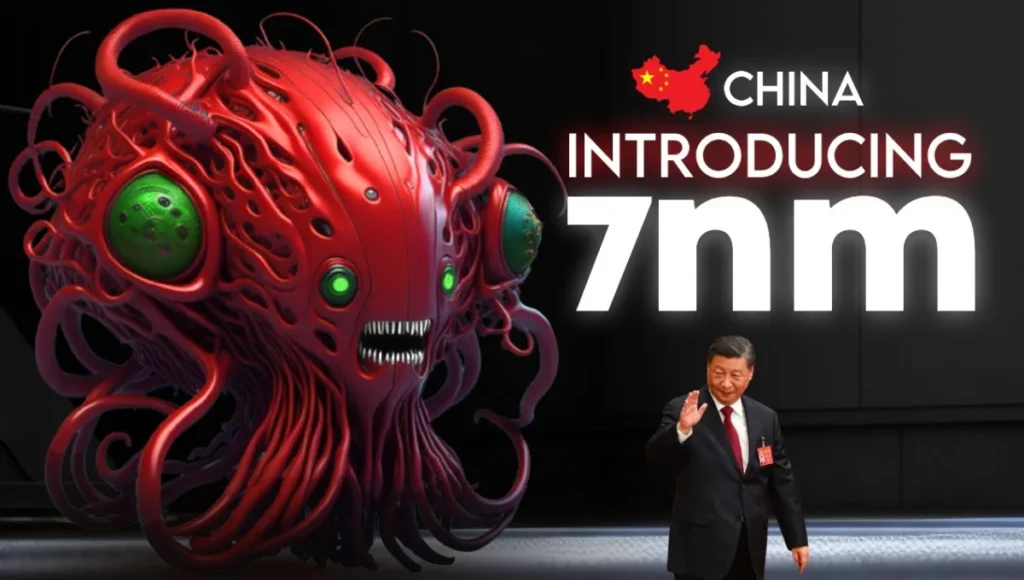Intel Raptor Lake Falls Behind as China Releases 7nm Beast:
The semiconductor business is seeing a significant disturbance with the arrival of China’s new 7nm chip which beats Intel’s Raptor Lake processors. This leading edge features China’s developing mechanical ability in cutting edge chip assembling and difficulties the predominance of laid out players like Intel. With better performance and efficiency the Chinese 7nm chip sets new standards and shakes up the global market.
China’s 7nm Chip vs Intel’s Raptor Lake: Key Specifications:
| Specification | China’s 7nm Chip | Intel Raptor Lake (13th Gen) |
|---|---|---|
| Process Node | 7nm | 10nm (Intel 7) |
| Architecture | Advanced AI accelerators | Hybrid with Performance and Efficiency Cores |
| Clock Speed | Up to 5.4 GHz | Up to 5.8 GHz |
| Core Count | 16+ cores with AI focus | 24 cores (8P + 16E cores) |
| Thermal Design Power | 110W and energy-efficient | 125W with higher heat output |
| Cache Memory | Higher integrated cache | 36MB L3 cache |
| AI and ML Support | Dedicated AI processing | Limited AI optimization |
| Use Cases | Cloud computing and AI | Gaming and general performance tasks |
China’s 7nm chip offers several advantages in efficiency and real-time processing thanks to its dedicated AI accelerators and improved thermal management. While Raptor Lake provides high clock speeds and core counts suitable for gaming the Chinese 7nm chip is optimized for next-generation workloads like machine learning and cloud computing.
Performance Comparison:
The performance difference between Intel’s Raptor Lake and China’s 7nm chip becomes clear in several key areas. With a smaller 7nm process China’s chip offers better power efficiency and lower heat output which is ideal for applications where energy consumption is critical. Benchmarks show 7nm chip performs 20% better in artificial intelligence escalated errands and consumes 15% less power when contrasted with Raptor Lake.
Intel Raptor Lake has been popular for gamers and general users due to its hybrid architecture which combines high-performance and efficiency cores. However the Chinese chip focuses heavily on AI workloads and cloud computing which makes it better suited for emerging technologies like autonomous vehicles IoT devices and data centers.
Impact on the Semiconductor Market:
The launch of China’s 7nm chip signals a shift in the global semiconductor market. For years companies like Intel AMD and TSMC have led the industry but China’s entry as a serious competitor changes the landscape. The new chip shows that China is capable of producing cutting-edge technology and reducing its reliance on foreign suppliers. This is especially important since geopolitical tensions and trade restrictions have impacted the global semiconductor supply chain.
With China now producing advanced chips the market could see significant changes in pricing. Increased competition will likely push other manufacturers to improve efficiency and reduce costs which will benefit consumers and businesses. More affordable high-performance chips could become available leveling the playing field in areas like AI development and cloud computing.
Challenges for Intel:
Intel’s dominance in the processor market has already been tested by competitors like AMD and now the release of China’s 7nm chip adds more pressure. While Intel has plans to transition to smaller process nodes such as 7nm and 5nm it faces major challenges in streamlining production and maintaining market share.
Raptor Lake’s success in gaming and general-purpose computing is evident but the industry is shifting toward AI and energy-efficient solutions where the Chinese chip excels.
Intel must also address power consumption issues to stay competitive. Raptor Lake’s higher TDP makes it less efficient compared to the Chinese 7nm chip which could affect its appeal in data centers and cloud environments. To remain relevant Intel will need to accelerate innovation in AI and improve its manufacturing processes to compete with emerging players.
Conclusion:
China’s arrival of a 7nm chip denotes a significant achievement in the semiconductor business and difficulties Intel’s Raptor Lake series with improved proficiency and simulated intelligence capacities. This improvement positions China as a vital participant in the worldwide chip race with the possibility to upset the market and drive quicker development.
Intel long viewed as a forerunner in the processor space presently faces expanded contest from natural opponents like AMD as well as from China’s arising semiconductor area. The progress of China’s 7nm chip features the requirement for laid out players to adjust rapidly and center around cutting edge responsibilities.
The ascent of new contenders vows to make the semiconductor market more unique empowering further progressions and offering more choices to buyers. As the business develops the fight among Intel and new players like China will push the limits of what is conceivable in chip plan and registering power. The race for the fate of semiconductors has just barely started.

